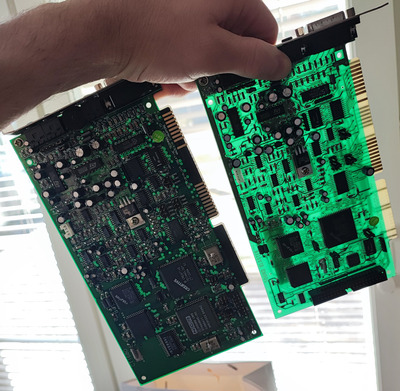I just had to test it since the ASUS P/I-P55T2P4 is on the test bench at the moment. I compared bus noises from ISA multi-i/O card against the onboard PCI controller (for some reason I had to use XTIDE Universal BIOS to get the ISA card working. System BIOS did not found the hard disk when onboard IDE was disabled). DIR /S /W the hard disk contents and you can easily hear what is going on when using headphones and volume is at maximum. In fact, you don't have to go that far. I could hear the hard disk spinning up from the headphones when powering on the system.
But with CT1600 I could hear the bus noises when using ISA multi-I/O card and with the onboard controller as well. Maybe the ISA was a bit worse, maybe not, I'm not sure. Both could be heard so if there was difference, it was small and not significant.
But this was just perfect time to test the "high quality" Sound Blaster Pro 2, CT1680. Unlike CT1600, it has a good quality PCB with ground plane (like SB16 CT17xx cards have). And no bus noises, not with ISA controller or with onboard PCI controller. I kept the volumes at maximum. So indeed the CT1680 is better quality card than the common CT1600. I think the CT1680 is the only Creative SB Pro with ground plane.
